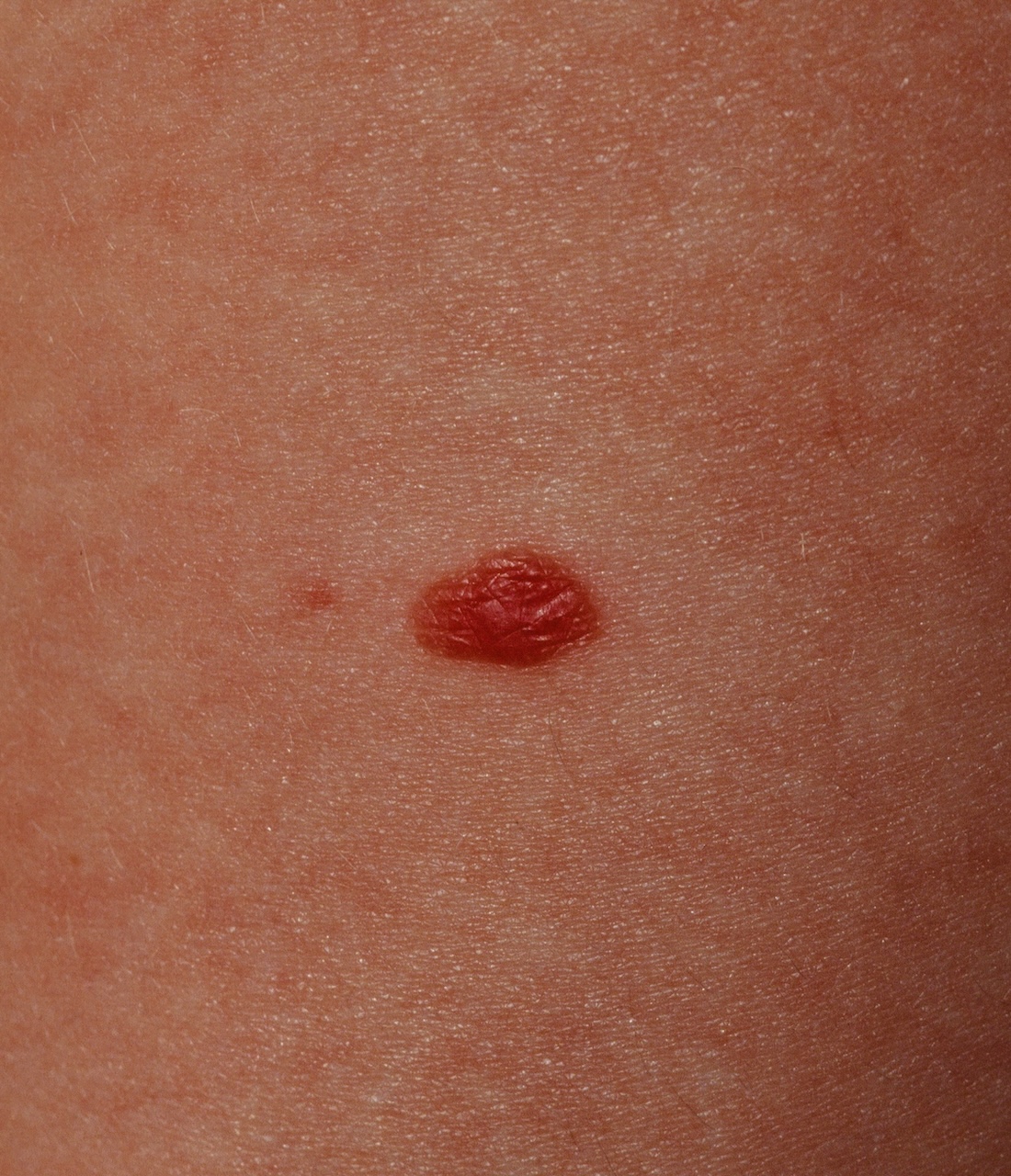
A new red plaque on the thigh of a child.
The Spitz nevus (SN) represents what used to be called benign melanoma or melanoma of childhood. These terms are no longer in use and should be avoided. It represents a proliferation of nevomelanocytic cells. It is usually benign, but unfortunately, some lesions which histologically showed the standard features of a Spitz nevus have metastasized, resulting in death. Because so few Spitz are seen in adulthood, it has been hypothesized that there is a histologic transition from Spitz nevus to compound nevus if left alone. Spitz nevus may occur in an agminated form or present as multiple, eruptive lesions.
The Spitz nevus usually presents as a solitary, dome-shaped papule in a child. It is common on both the head and neck and the extremities. The majority of lesions are pink to red to amelanotic. Approximately 10% of SN are brown to black. It may be hard or soft in consistency, and solitary or rarely multiple (agminated). It is usually less than 1 cm in diameter and frequently less than 0.6 cm. It occasionally may bleed and be confused with a pyogenic granuloma.
In general, an experienced dermatopathologist should read these cases. STUMP lesions (Spitzoid tumor of uncertain malignant potential) can be very challenging histologically.
Homepage | Who is Dr. White? | Privacy Policy | FAQs | Use of Images | Contact Dr. White